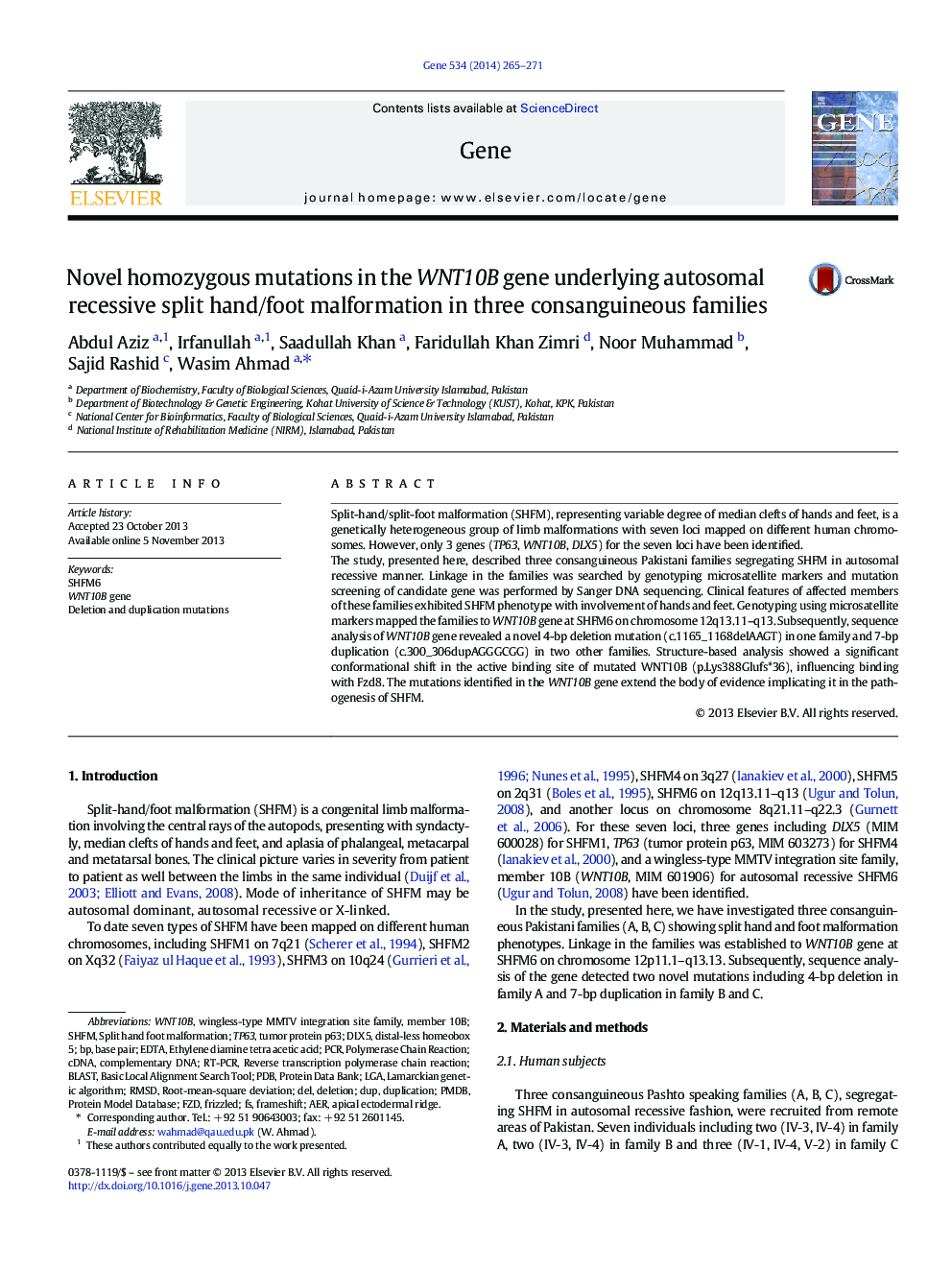| Article ID | Journal | Published Year | Pages | File Type |
|---|---|---|---|---|
| 5906009 | Gene | 2014 | 7 Pages |
Abstract
The study, presented here, described three consanguineous Pakistani families segregating SHFM in autosomal recessive manner. Linkage in the families was searched by genotyping microsatellite markers and mutation screening of candidate gene was performed by Sanger DNA sequencing. Clinical features of affected members of these families exhibited SHFM phenotype with involvement of hands and feet. Genotyping using microsatellite markers mapped the families to WNT10B gene at SHFM6 on chromosome 12q13.11-q13. Subsequently, sequence analysis of WNT10B gene revealed a novel 4-bp deletion mutation (c.1165_1168delAAGT) in one family and 7-bp duplication (c.300_306dupAGGGCGG) in two other families. Structure-based analysis showed a significant conformational shift in the active binding site of mutated WNT10B (p.Lys388Glufs*36), influencing binding with Fzd8. The mutations identified in the WNT10B gene extend the body of evidence implicating it in the pathogenesis of SHFM.
Keywords
DUPLamarckian genetic algorithmdistal-less homeobox 5SHFMDlx5Wnt10bfrizzledFZDTP63LGART-PCRPDBRMSDAERcDNAComplementary DNABLAST, basic local alignment search toolEDTAEthylene diamine tetra acetic acidroot-mean-square deviationBlastframeshiftduplicationbase pairdeletionDELapical ectodermal ridgepolymerase chain reactionreverse transcription polymerase chain reactionPCRProtein Data Bank
Related Topics
Life Sciences
Biochemistry, Genetics and Molecular Biology
Genetics
Authors
Abdul Aziz, Irfanullah Irfanullah, Saadullah Khan, Faridullah Khan Zimri, Noor Muhammad, Sajid Rashid, Wasim Ahmad,
